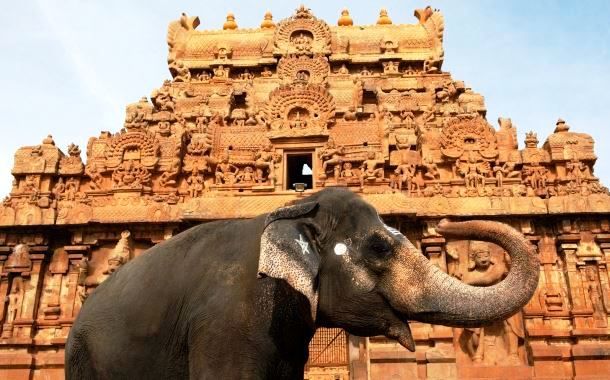How about taking your spiritual journey to the next level—visiting India’s own version of the ‘Statue of Liberty’ without a US visa, or crafting ‘monkey dolls’ from un-husked coconuts instead of exploring the usual tourist spots?
This summer, my friends and I zeroed in on Tamil Nadu for our annual holiday break. Tamil Nadu Tourism is actively promoting the state’s temples along with its beaches, heritage, adventure, and cultural richness. With more than 33,000 temples—many between 800 to 1,200 years old—it’s rightly called the ‘Temple State of India’. I’ll admit, I wasn’t initially excited. I assumed Tamil Nadu would offer nothing more than a dozen temple visits. But I was completely wrong. The moment I landed in Chennai and began my week-long vacation, I realized how mesmerizing this part of ‘Incredible India’ truly is. Exotic beaches, majestic temples, thrilling wildlife sanctuaries, and well-preserved cultural heritage make it a must-visit destination. Since it’s impossible to cover the entire state (which feels like a country of its own), let’s fasten our seatbelts and dive into some unforgettable experiences.
Travelling Times!
Of course, we visited temples—it’s the temple state, after all! Thousands of towering temples are scattered across Tamil Nadu. Among the most famous are the Shree Meenakshi Sundareswarar Temple in Madurai and the Brihadisvara Temple in Thanjavur, both known for their awe-inspiring architecture. Every full moon, thousands of devotees flock to the Arulmigu Arunachaleswarar Temple in Thiruvannamalai. We also had the option to visit the Arulmigu Sarangapani Temple in Kumbakonam—one of the oldest, dating back to the 9th century—and the Kanchi Kamakshi Amman Temple in Kancheepuram, known for its ruins and stunning sculptures.
Instead of the usual tourist-packed Meenakshi Temple, we chose to explore the lesser-crowded yet magnificent Brihadisvara Temple, fondly called the ‘Big Temple’. It’s nearly 40 times larger than most other temples in Thanjavur and the surrounding areas. Completed in 1010 AD, this 1,000-year-old marvel is a UNESCO World Heritage Site with free entry and no restrictions for non-Hindus. You just have to remove your shoes before entering and avoid taking photographs, as they’re restricted within the temple.
Dedicated to Lord Shiva, the massive 216-feet-tall gopuram transports you straight back to 1010 AD. The central vimana (tower) inside the main temple complex is breathtaking. It's a hollow structure, much like the pyramids of Giza, constructed entirely from interlocking stones using a ball-and-socket joint technique—without any binding material. This architectural brilliance has survived six recorded earthquakes without major damage. I had to sit down and just absorb it all. The temple’s intricate details and excellent state of preservation left me spiritually uplifted and mentally at peace.
Musafir Tip: Thanjavur is about 300 km from Chennai and can be easily accessed by air (via Tiruchirapalli Airport), train (Thanjavur Junction), and road (NH 45A). For local transport, you’ll find auto-rickshaws, cycle-rickshaws, and taxis. Auto-rickshaw drivers can be tough negotiators—so don’t hesitate to bargain until you get a fair fare.
Meeting the ‘Kanya’ of India
Kanyakumari is not just about its legendary sunrise and sunset views. The region is dotted with fascinating sites like the Thiruvalluvar Statue (one of Asia’s tallest statues), the Kanyakumari Temple, Vivekananda Rock Memorial, Udayagiri Fort, and a thriving handicraft industry.
The Thiruvalluvar Statue is a towering tribute to Tamil poet-saint Thiruvalluvar. Standing 133 feet tall (the Statue of Liberty is 151 feet), this monument weighs over 7,000 tons and radiates cultural significance. Standing before it was surreal. I managed to get some fantastic shots to show my friends—many of whom had never even heard of this marvel. Located 400 meters off the Kanyakumari coast, the statue is accessible via a ferry that also stops at the Vivekananda Rock Memorial.
Monkey Dolls & Handicrafts
The local handicraft industry in Kanyakumari is globally renowned. You’ll find everything from handcrafted trinkets and seashell art to palm leaf drawings. Be cautious, though—some shopkeepers may try to pass off imitation beads as authentic coral. As an Indian traveler, I bargained hard and scored some of the best souvenirs at great prices!
For a more immersive rural experience, visit local villages around Kanyakumari where artisans still make ‘monkey dolls’ from un-husked coconuts. You can even try your hand at creating coconut shell items like spoons, ladles, forks, ice cream cups, pen stands—or even jewelry!
Many of the region’s tales are wrapped in mythology. For instance, legend has it that Kanya Devi (an incarnation of Parvati) was to marry Lord Shiva, but he never showed up. The uncooked rice and grains meant for the wedding feast were left unused, and over time, supposedly turned to stone. Even today, some claim the tiny stones resembling grains along Kanyakumari’s shore are remnants of that ancient wedding-that-never-was.
If you’ve never been to Kanyakumari, it’s about time you added this serene and sacred destination to your travel list.
Musafir Tip: While sunrise can be viewed year-round, the sunset is only visible from October 15 to March 15 at the southernmost tip. However, you can see both sunrise and sunset year-round from Murugan Kundram hill, which offers a panoramic view of Kanyakumari.
Discover the cultural heart of Tamil Nadu with ease:
- Book Flights to Chennai & Beyond
- Find Comfortable Hotels in Tamil Nadu
- 📞Call 022 4164 2214 to explore Tamil Nadu Tour Packages
